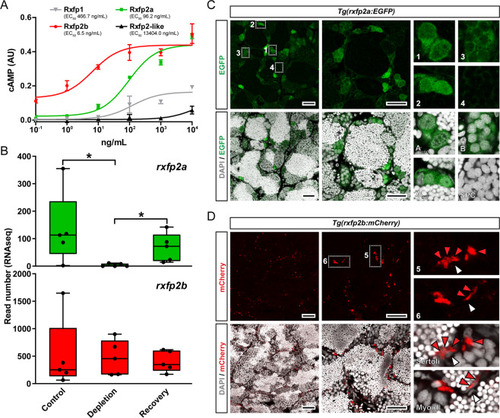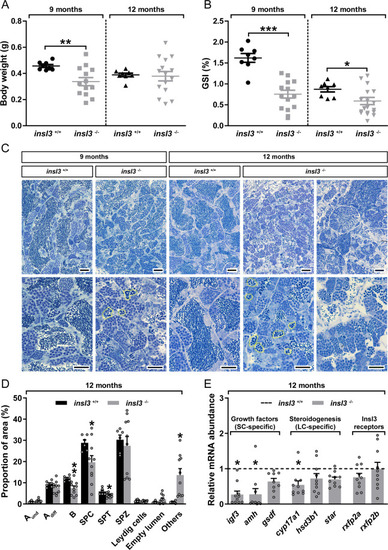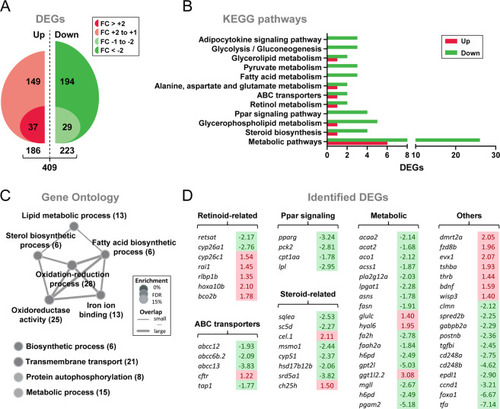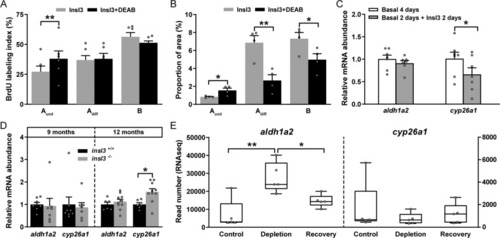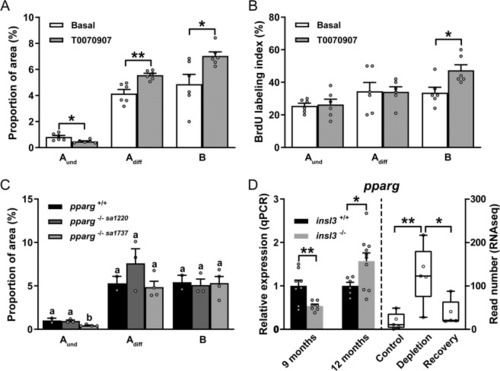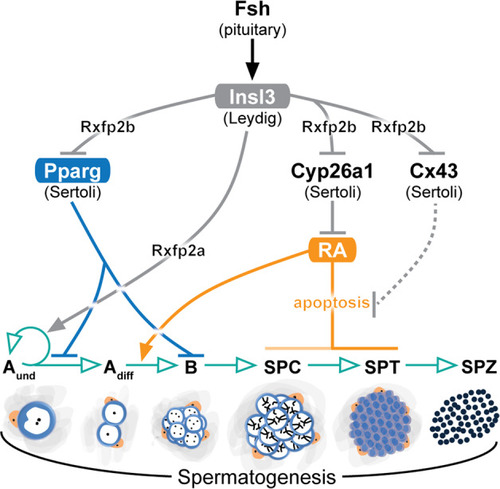- Title
-
Insulin-like 3 affects zebrafish spermatogenic cells directly and via Sertoli cells
- Authors
- Crespo, D., Assis, L.H.C., Zhang, Y.T., Safian, D., Furmanek, T., Skaftnesmo, K.O., Norberg, B., Ge, W., Choi, Y.C., den Broeder, M.J., Legler, J., Bogerd, J., Schulz, R.W.
- Source
- Full text @ Commun Biol
|
|
|
|
|
|
|
|
|
|
|
|
|
Described effects are indicated by black (Fsh), gray (Insl3), blue (Pparg), and orange (RA) arrows, while germ cell development or germ cell-mediated effects are indicated in green. Gray dashed line denotes no experimental evidence reported. Fsh, follicle-stimulating hormone; Insl3, insulin-like 3; Pparg, peroxisome proliferator-activated receptor gamma; RA, retinoic acid; Cx43, connexin 43; Rxfp2a, relaxin family peptide receptor 2a; Rxfp2b, relaxin family peptide receptor 2b; Aund, type A undifferentiated spermatogonia; Adiff, type A differentiating spermatogonia; B, type B spermatogonia; SPC, spermatocytes; SPT, spermatids; SPZ, spermatozoa; Leydig, Leydig cell; Sertoli, Sertoli cell. |

